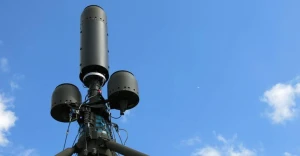
September 25 – October 2 live war map: Ukrainian forces lose Vuhledar, but stall Russian advance near Pokrovsk
The second Russian counteroffensive in the Kursk region has fallen apart, with little change to the frontlines. However, Russian forces have taken control of New York and are close to driving the Ukrainian army out of Vuhledar, which could have major consequences for a large portion of the front
For the first time since mid-August, weekly battles have dropped below 1,000, largely due to 150 fewer clashes in the Kurakhove direction. Still, September turned into the bloodiest month of the war: Ukrainian forces set a grim new record, wiping out 38,100 Russians. Meanwhile, the Russians seem to have stopped conserving their armor, unleashing mass tank and vehicle assaults in almost every hotspot, even in Vovchansk. These offensives highlighted, yet again, the vulnerability of armored units — nearly 500 pieces of equipment were damaged or destroyed as all attacks were repelled by Ukrainian defenders.
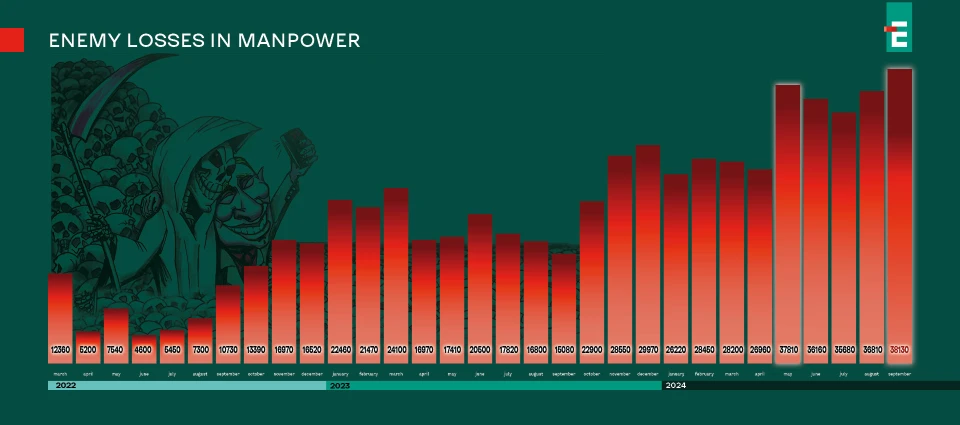
Fall of Vuhledar
Until the very last moment, Ukrainian forces held onto Vuhledar’s northern sector, using it as a route for their retreat. Over the past days, Russian troops captured the eastern, southern, and western outskirts, eventually entering the city’s core. At that point, there was no tactical value in holding the final few buildings, and the Ukrainian Armed Forces fully withdrew from the city. The beleaguered 72nd Brigade, without reinforcements, had already been preparing its exit while managing to inflict considerable losses on Russian forces. The retreat was made more perilous as the so-called "road of life" was under constant fire — even from small arms — which tragically meant not everyone made it out.
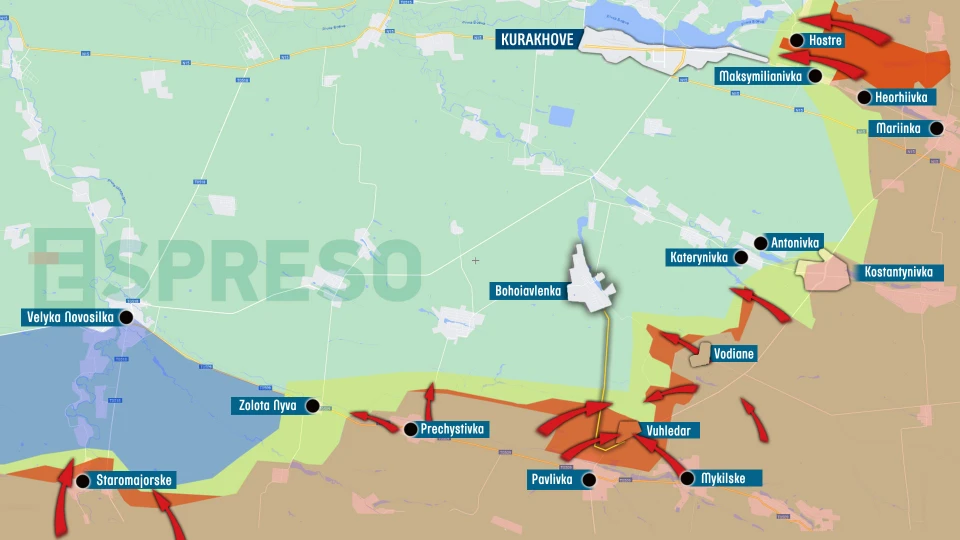
While this unfolded, Russian troops secured Vodiane and the surrounding spoil tips and high ground, giving them fire superiority not just over Vuhledar but also over Bohoyavlenka, where Ukrainian forces are pulling back to set up their next defensive line. The Russians now aim to push toward Kurakhove, though they'll first have to breach Ukrainian defenses along villages 10-13 km south of the city. In key areas like Kostyantynivka and Katerynivka, Ukrainian defenders successfully repelled Russian attacks. Russian forces deployed 11 armored vehicles and eight tanks in a bid to break through, but were met with heavy resistance — most of their vehicles were destroyed.
The Russians were also more aggressive around Novoukrainka and Zolota Nyva, though with little success — unlike in the Berdyansk direction, where they gained 1 km near Staromayorske. With the final fall of Vuhledar, it's clear that Russian forces plan to advance toward both Kurakhove and Velyka Novosilka, which eluded them in 2022.
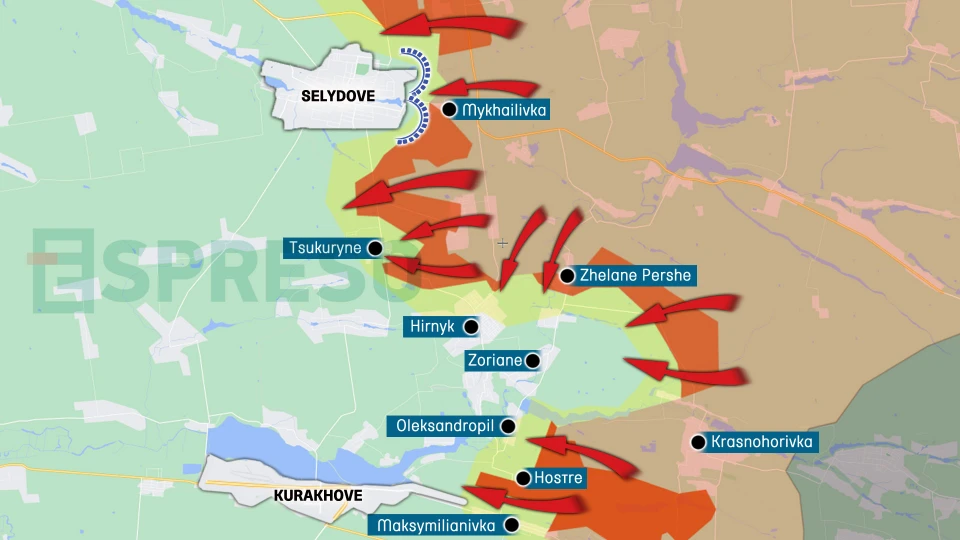
Pokrovsk-Kurakhove front braces for new assaults
Ukrainian forces have held their ground for another week in the "pocket" around Krasnohorivka’s northern outskirts and managed to keep the line between Zhelanne Pershe and Zhelanne Druhe. Russian forces couldn’t push forward from Oleksandropil but did attempt a vehicle advance toward Kurakhove, which ended in flames.
After seizing Ukrayinsk, Russian troops focused on advancing toward Tsukuryne, approaching it from both the north and south. Much of Tsukuryne is now a gray zone, with Russians securing positions on its southern edge. Tsukuryne is critical for the defense of both Selydove and the Hirnyk-Kurakhivka area, as it prevents the Russians from flanking these settlements. As long as the Russians can’t encircle Selydove and Hirnyk from multiple sides, Ukrainian forces should be able to maintain their defense, as they have for weeks.
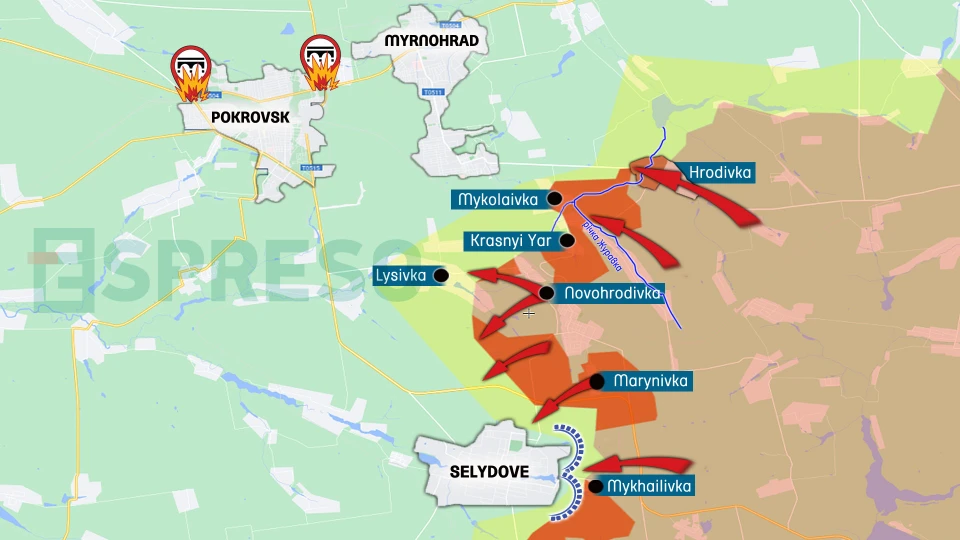
To the north of Selydove, Russian troops finally broke through Marynivka’s defenses, expanding their control and moving closer to the Korotchenko mine.
At the same time, the Russians are stretched thin — they can't sustain intense offensives across the entire Pokrovsk-Kurakhove front. As a result, activity to the west of Novohrodivka and Hrodivka has been minimal. Their efforts here have mostly been concentrated on expanding their foothold on the right bank of the Vovcha River near Mykolaivka. This village is the last one before Myrnohrad, but the Russians aren’t ready for a direct assault on the city yet. It could take them months to prepare for that battle.
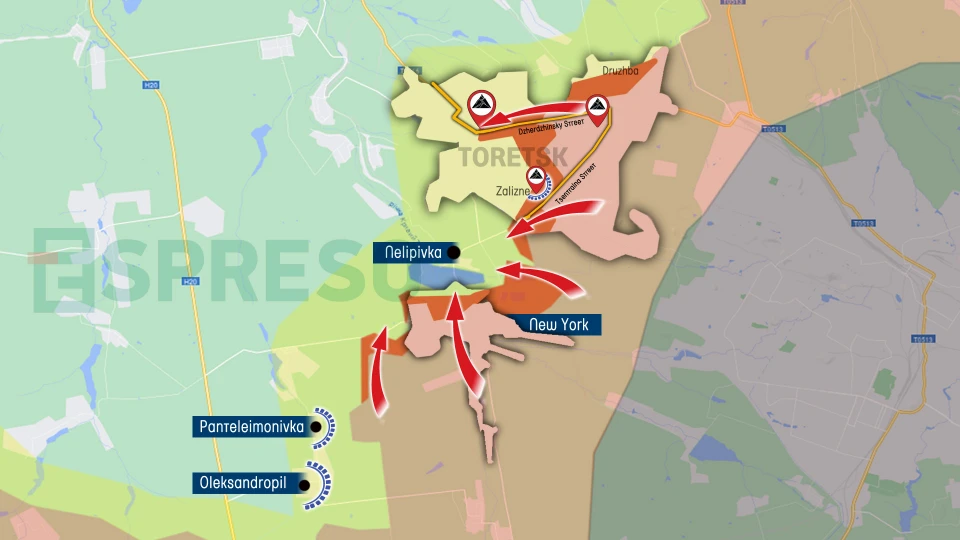
Occupation of New York and urban warfare in Toretsk
Despite a successful Ukrainian operation in New York a few weeks back, which temporarily freed the city’s center, the situation has since reversed. After heavy fighting, Ukrainian forces were pushed out entirely. Ukrainian troops are now trying to hold the line at Nelipivka, but the village is already being attacked from two sides, with its eastern outskirts under Russian control. Capturing New York has given Russian forces a pathway to assault Toretsk from the south, and possibly to encircle it from the west in the future. Currently, street fighting rages on in Toretsk, with clashes moving into the city’s central areas. The battle is fierce, with control shifting house by house, and the front line remains fluid.
Luhansk and Kharkiv regions
Russian forces have completed the occupation of Nevske and crossed to the right bank of the Zherebets River. The Ukrainian Armed Forces must act swiftly to halt this advance, or we risk a similar situation to what’s unfolding near Pishchane in the Borova direction. Right now, it’s still possible to counter this offensive with less effort, especially since the 3rd Assault Brigade is engaged on the adjacent front.
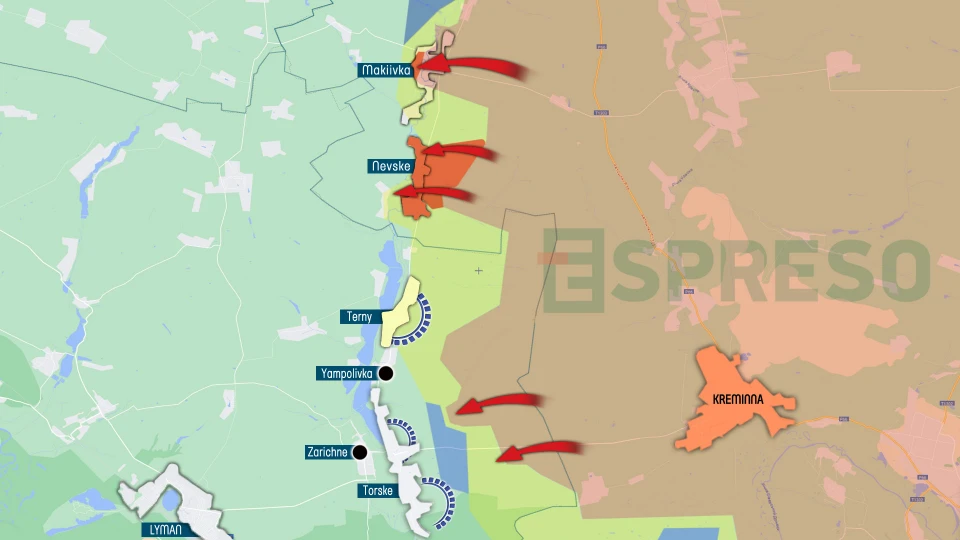
Around Pishchane, the Russians are pushing to expand their control and inch closer to Kruhlyakivka, aiming to secure a foothold on the left bank of the Oskil River. To the north, they bombed the bridge near Osynove, cutting the route to Kupyansk-Vuzlovyi. The Russians' main objective here is to cripple Ukrainian logistics.
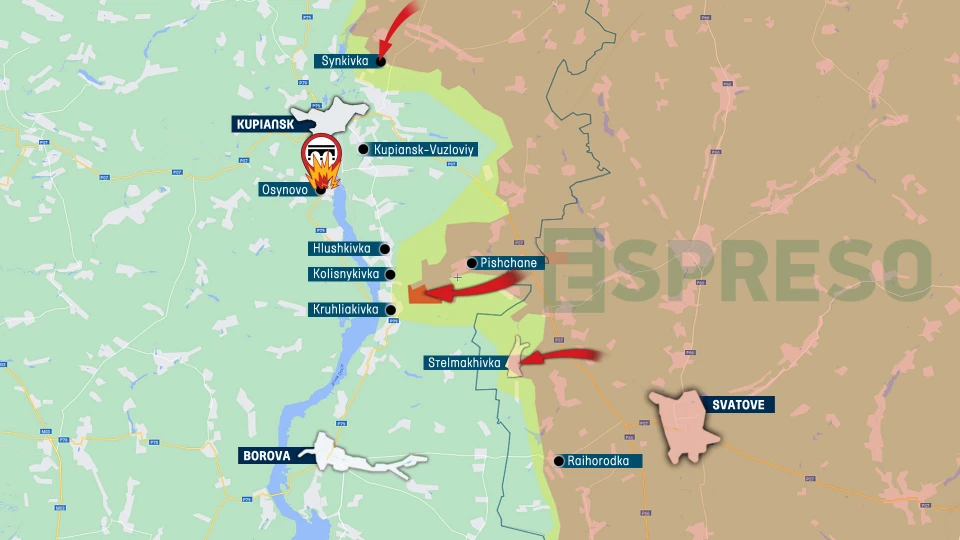
Following the liberation of the aggregate plant in Vovchansk, Ukrainian forces launched attacks to push the Russians back to the northern quarters of the city. In response, they attempted counterattacks using tanks and infantry fighting vehicles. For now, these skirmishes have not altered territorial control. Meanwhile, Russia is preparing reserves in the Belgorod region, which they could deploy either to renew the offensive in the Kharkiv region or to shore up their position in Kursk.
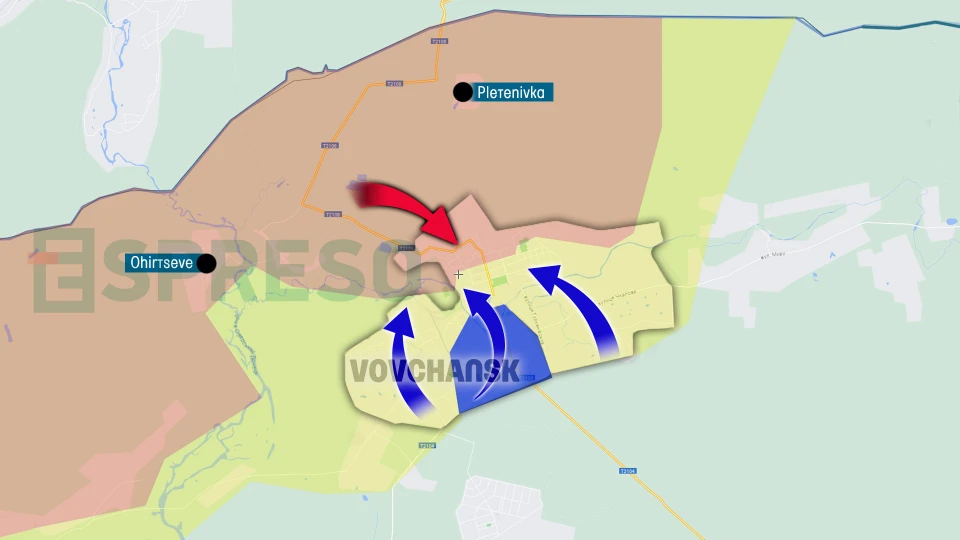
Russian front
Russian counterattacks persist in the Kursk region, but neither side is gaining much ground. Ukrainian forces have not taken Glushkovo, and the Russians faltered in their counteroffensive at Lyubimovka. Currently, they are attempting to push toward Vnezapnoye, but their lack of sufficient forces is holding them back.
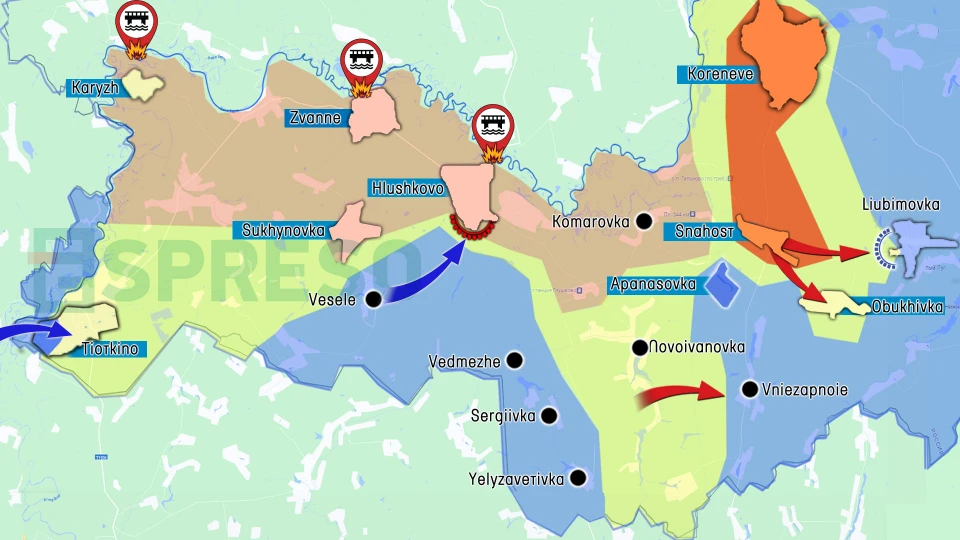
East of Korenevo, the Ukrainian Armed Forces have slightly extended their control along the railway between Vetreno and Aleksandrovka. While Russian troops struggle to break through to their encircled forces in Zhuravli and Pogrebki, Ukrainian forces are advancing along the road to Lgov.
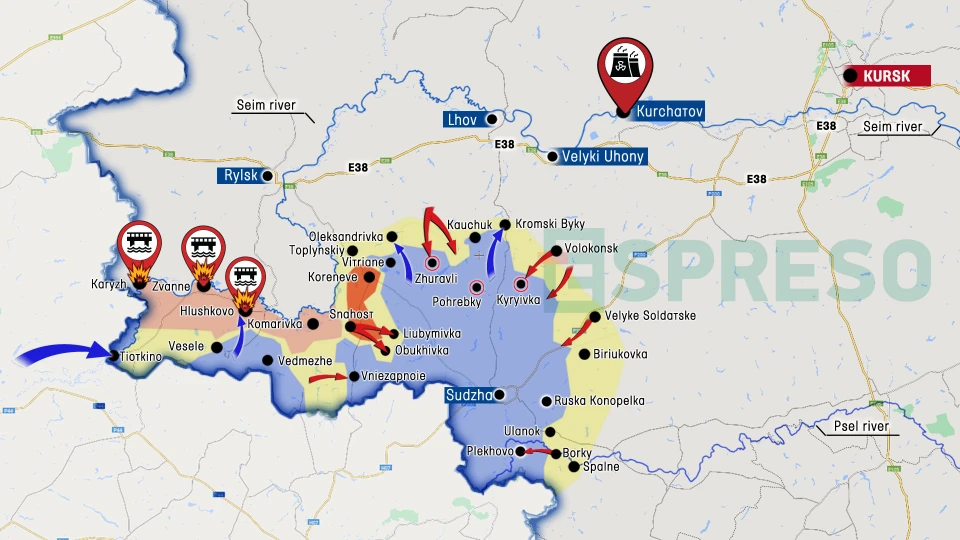
On the eastern front, after gaining ground in Ulanok and Borki, Russian forces have been assaulting Plekhovo for two consecutive weeks without success. Presently, they are expending around 60% of their precision-guided bombs in the Kursk region. This depletion of their air power is a significant achievement for the Ukrainian forces. In the coming weeks, it will become clear what takes priority for Putin — securing Kursk or launching a new offensive on Kharkiv.
The maps were created using data from the General Staff of Ukraine’s Armed Forces and other verified sources. However, they are approximate and primarily reflect trends in the war zone.
- News






